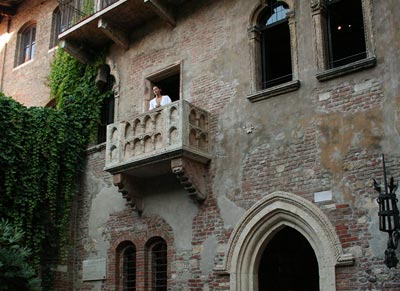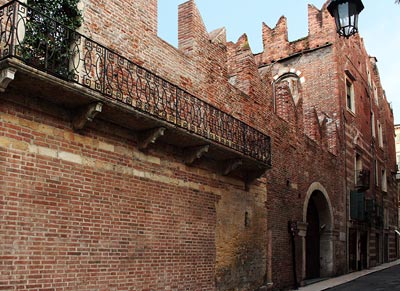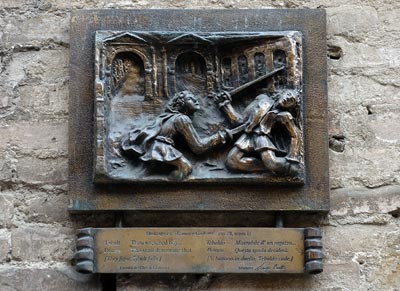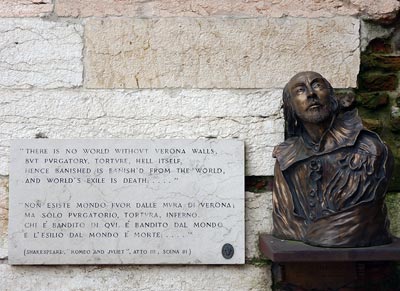Juliet's Wall Graffiti

For many years, visitors to Juliet's House, especially young couples, were allowed to write love messages on the entrance wall to the courtyard.
Since 2019, to protect the monument and surrounding areas from vandalism, this practice has been banned, and the wall cleaned up.
Oncoming Tours
Info and Bookings:
+39 333 2199 645 info@veronissima.com P.I. 03616420232 C.F. CPPMHL74L13L781C
Le vicende

No one really knows when or how they started writing on the wall of Juliet's house. Probably it was as old as the opening of the museum at Juliet's House in the early '900.
This bad practice of some tourists to write on walls and monuments of the places they visit is very old. At Juliet's house it had been tolerated, perhaps because the romanticism of the messages was considered appropriate to the place.
There were couples who wrote their names and promises of love inside large hearts traced in felt-tip pen in this evocative place. There were the messages of those who, with broken hearts, sought consolation by thinking of the unfortunate story of Juliet. There were also messages of peace and universal love written in many different languages.
a facciata stessa della casa di Giulietta era completamente coperta di graffiti multicolori. Then, after the renovation of the building, they restricted the space for writing to the gallery leading to the inner courtyard. For this purpose there were plasterboard panels covering the entrance walls. Once or twice a year, when there was no more room to write, the panels were replaced, although they didn't stay pristine for long.

The written wall itself became a tourist attraction, photographed as much as the famous balcony, reproduced on postcards, T-shirts, boxes of chocolates, even onwine labels.
Internationally renowned artists took pieces of the writing-covered wall to make works of art out of it.
Defacing
With the increase of mass tourism and the exponential growth of visitors to Verona in recent years began problems and controversies.
School trips, football fans, large organized groups, it was no longer only lovers who visited Juliet's house and wrote on the wall.
In a short time, romantic dedications were flanked by writings of every kind and content, including insults and blasphemies.
When the wall became covered with messages and there was no more room to write, people started sticking notes. If they didn't have tape or glue, they used chewed gums instead. Many visitors began to think that this too was a sort of funny tradition, and the wall became covered with chewing gum.
Information signs clearly indicated the limited space where writing was allowed, but many visitors began to scribble even parts not covered by the panels, both inside and in the immediate vicinity of the entrance, especially after 7:00 p.m. when the gate closed. The whole of Via Cappello, where Juliet's house is located, was defaced. Writings also began to appear on Romeo's house, which is a private residence, and on other monuments in Verona. The feeling was that, by allowing people to write even on a limited place, some thought they were authorized to do so throughout the city.
Restoration
CSo in the end the municipal administration of Verona took the decision. It was certainly painful, since the "Juliet's graffiti" were now seen as an attraction, but right and inevitable if they wanted to safeguard the decency of the monument and of the entire city. The wall was cleaned up for the umpteenth time, the chewing gum was removed, and the messages inviting to have respect for the place and the city, with the relative sanctions for transgressors, are now clearly visible. A few guards check, but it seems that most of the public, after an initial disappointment, understands and approves the good reasons for the initiative.
Further Information:
+39 333 2199 645 info@veronissima.com P.I. 03616420232 C.F. CPPMHL74L13L781C
+39 333 2199 645
info@veronissima.com

 IT
IT 日本
日本 DE
DE FR
FR 中文
中文 ES
ES












